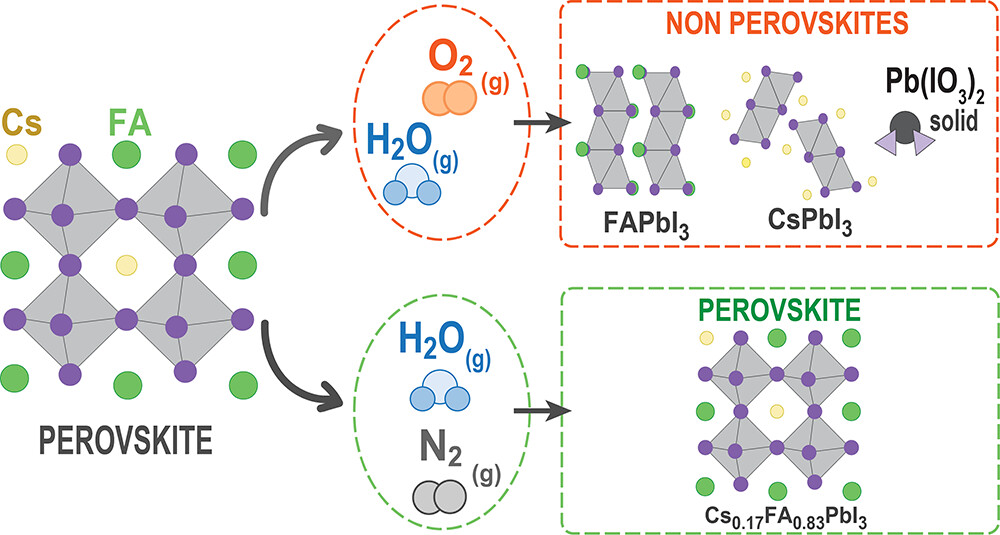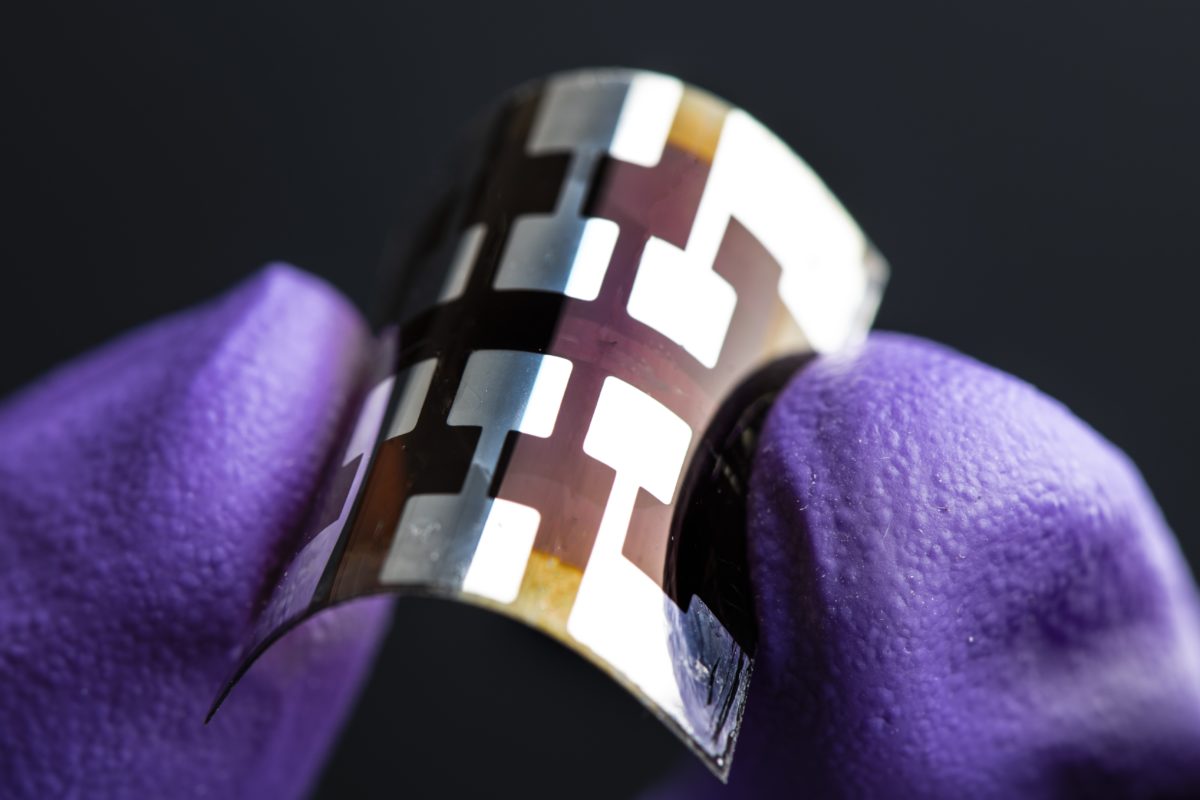Researchers at Georgia Tech have discovered a new factor in perovskite solar cell stability that may enable the development of more stable, longer-term perovskites. The research, published in the Journal of the American Chemical Society, is a first step toward solving one of the main issues in metal halide perovskite development: degradation.
Perovskite solar cells are an emerging category of photovoltaic materials that are lauded for their ability to be deposited in extremely thin films, allowing the material to be deployed in a wide variety of use cases. Though these cells have now achieved efficiencies that compete with traditional silicon solar cells widely used today, they suffer from rapid efficiency degradation from the elements.
Using X-ray to examine the perovskites’ crystal structures’ reactions to both water and oxygen, the researchers discovered that degradation occurs due to an interplay of oxygen and water molecules. When isolated individually, however, neither oxygen nor water caused rapid degradation seen when both are present.

The Georgia Tech team developed a thin water-repellent layer for the perovskite cells using a material called phenethylammonium iodide (PEAI). The researchers found that PEAI was sufficient to stabilize the perovskites structure and conversion efficiency.
However, further research is needed to optimize PEAI layers. While the material does well to repel water, it struggles with thermal stability. The Georgia Tech researchers said finding a way to support thermal stability for PEAI layers is the next step in their pathway toward making commercially viable perovskites.
“Industry is already very interested, with companies around the U.S. popping up and trying to commercialize this. All the technology that we’re creating here at Georgia Tech is eventually going to be able to be translated into industry,” said Juan-Pablo Correa-Baena, assistant professor in the School of Materials Science and Engineering, Georgia Tech.
Correa-Baena said that perovskites are useful not only for photovoltaic applications, but for other technologies that require light transmission.
“Perovskites have the potential of not only transforming how we produce solar energy, but also how we make semiconductors for other types of applications like LEDs or phototransistors. We can think about them for applications in quantum information technology, such as light emission for quantum communication. These materials have impressive properties that are very promising,” said Correa-Baena.
This content is protected by copyright and may not be reused. If you want to cooperate with us and would like to reuse some of our content, please contact: editors@pv-magazine.com.









By submitting this form you agree to pv magazine using your data for the purposes of publishing your comment.
Your personal data will only be disclosed or otherwise transmitted to third parties for the purposes of spam filtering or if this is necessary for technical maintenance of the website. Any other transfer to third parties will not take place unless this is justified on the basis of applicable data protection regulations or if pv magazine is legally obliged to do so.
You may revoke this consent at any time with effect for the future, in which case your personal data will be deleted immediately. Otherwise, your data will be deleted if pv magazine has processed your request or the purpose of data storage is fulfilled.
Further information on data privacy can be found in our Data Protection Policy.